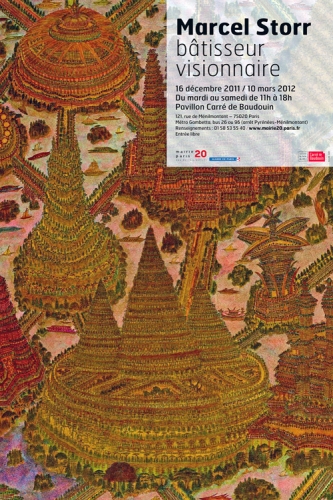

Zaista bih htio posjetiti ovaj planet, možda i ostati na njemu.









Marcel Storr at Carré de Baudouin
Marcel Storr, Cathedral (detail), c1930
Marcel Storr, bâtisseur visionnaire takes us chronologically through the intriguing oeuvre of little-known Marcel Storr. Abandoned as a child, illiterate and with various challenges to his physical and mental health, Storr was completely self-taught. His modest lifestyle as a road sweeper in the Bois de Boulogne did not afford him the luxury of unlimited materials or travel and yet his drawings are like rich illustrations of the most foreign of cities.
In the first room hangs a series of cathedrals. They are not drawn from life but are fairly realistic, in a naive children’s book sort of way. Storr had a partial grasp of perspective, and was obviously concerned with scale. In some drawings tiny people or vehicles are added to show the monumental size of the edifices, in others smaller scale Parisian-style buildings are added along side, adding to the jauntiness of the vista. - thegreatexposition.com/?p=2558
Marcel Storr, Mégapole, 1960s
The real impressive stuff, however, is upstairs. Another series of cathedrals, becoming increasingly other worldly, bridges the gap between the early cathedrals and the following “Megapoles”. Storr’s “Megapoles” are larger and, while retaining certain familiar architectural details, utterly fictitious. Some look like elaborate turn of the century World’s Fair pavilions, others look like a colourful vision of the future. Familiar details pop up amongst the aerial walkways and soaring towers: something that could be the Golden Gate bridge, bits of Angkor Wat, the Sagrada Familia, or even the Eiffel tower.
MARCEL STORR: REVENGE OF AN UNDERGROUND IMAGINATION
Laurent Danchin explores the paranoiac cities and basilicas of Marcel Storr

...At a time when it is fashionable to be a self-taught artist, there are apparently fewer and fewer cases of genuine ‘art brut’, which makes Marcel Storr’s large pencil and coloured ink drawings of churches and cities of the future all the more valuable. A collection of fifty or so of his works were discovered in 1971 by a Parisian couple called Mr and Mrs Kempf, after Storr’s wife introduced them to his secret world. His drawings teem with buildings whose spires, towers, domes, pinnacles, minarets reach up into the sky, but it is a world strikingly devoid of thought or feeling, whose population is reduced to ants swarming under fleecy, ominous, weird skies.
Born in Paris on July 3rd, 1911, Storr was an abandoned child, who was subsequently apprenticed in farms, entrusted to nuns at an Alsatian convent, sent down the mines, and who worked at Les Halles market, loading and unloading lorries. In 1964, he found a job sweeping leaves in the Bois de Boulogne and married. He had been drawing for some time when his wife, a caretaker at a Primary school in rue Milton, in the 9th arrondissement, took advantage of his being away one evening to invite the art-lovers, Mr and Mrs Kempf into her kitchen after a parents’ meeting. From under the oilcloth on the table, she pulled out her husband’s secret drawings, made mostly in a large spiral copy book.

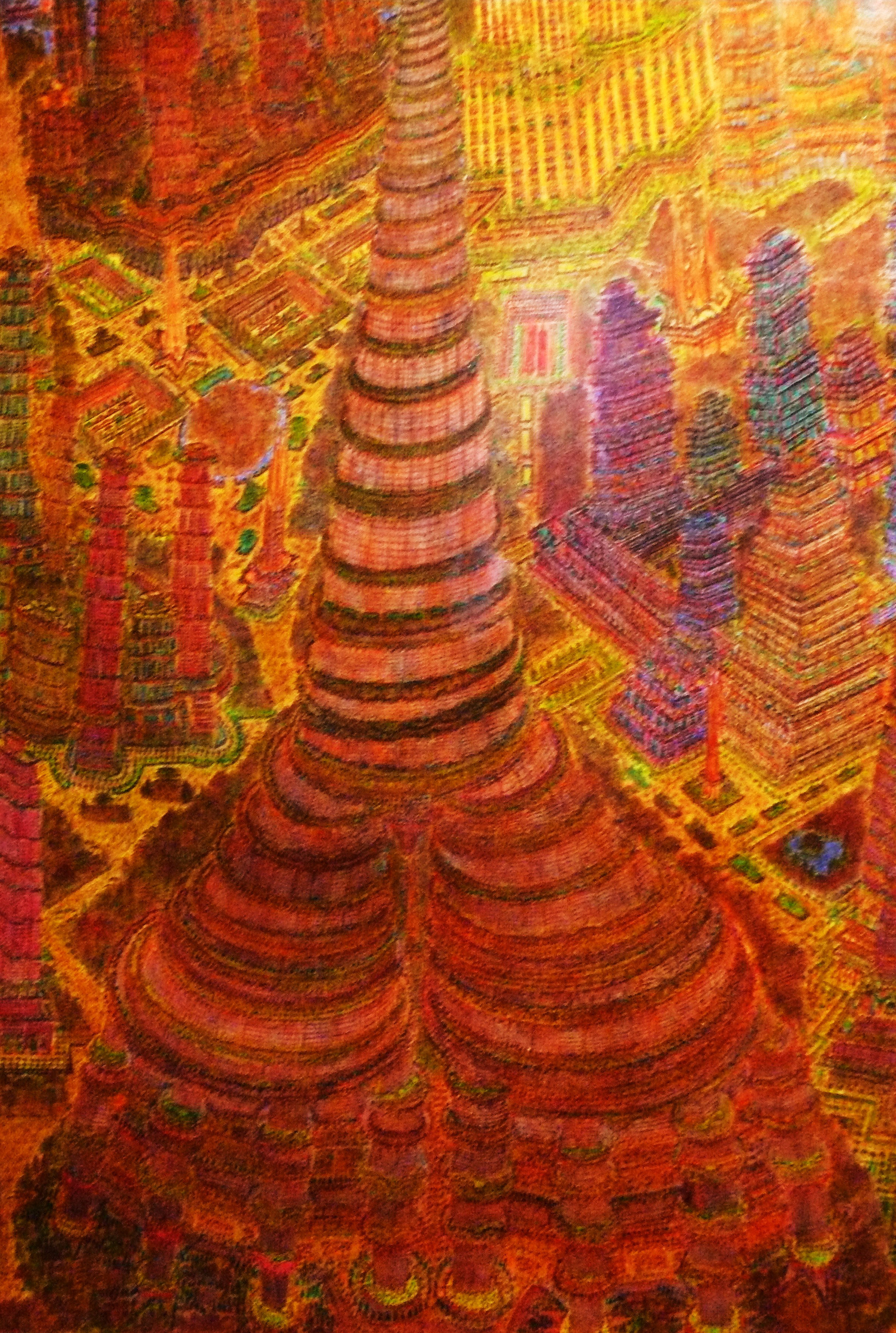

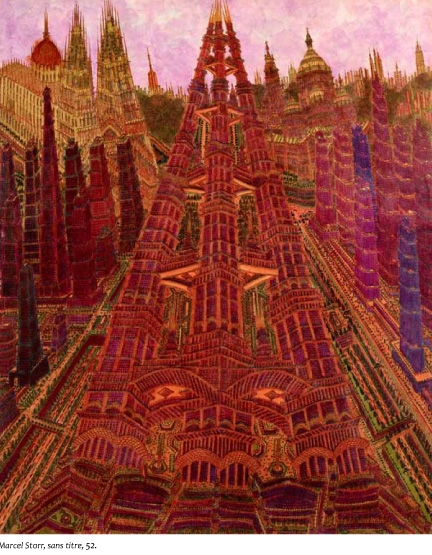
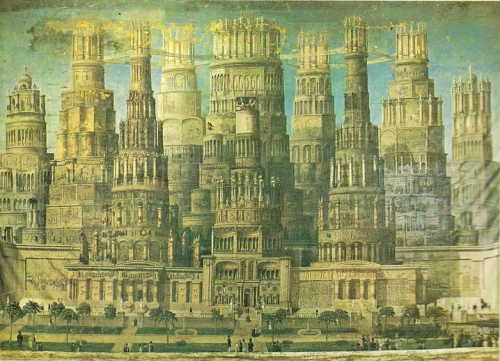

The works of Marcel Storr in Paris

Marcel Storr, bâtisseur visionnaire (or visionary builder), runs through March 31 at Le Pavillon Carré du Badouin in the 20th arrondissement. His drawings on display at this repurposed hôtel particulier draw you in, inexorable and a bit disorienting, like a guide who has led you to a dark strange landscape and then leaves you on your own to figure your way back to the light and a more recognizable reality. Little is known about Storr (1911-1976).
He was a humble groundskeeper at the Bois de Boulougne and various other parks and gardens of Paris. In the meantime he created an urban universe of towering churches and skyscrapers looming over febrile landscapes, part hallucinatory and biblical, part science-fiction and pre-apocalyptic.

He stashed away the drawings – often under the kitchen table cloth. Toward the end of his life, while Storr was out of the house, his wife invited a couple of collectors to see some of his works. Impressed, they tried to convince him to sell them, but he refused. Preferring, perhaps to keep his fantastic urban visions to himself (though he thought highly of what he called his "genius"). Yet his sixty or so creations were gathered together for display after his death, and Storr's works have gradually begun to become known. This exposition covers four periods marked by the evolving focus of Storr's drawings. During his first period, from the 1930s to the end of World War II, Storr drew and sketched, in crayon, ink and in watercolor, a series of churches. Some are modeled after Parisian churches, but the architecture is sui generis: they are all the work of Storr, with more towers than you would think a church could support. An excess of excitement about the possibilities for reaching the sky. The colors here, and in many of his drawings, are rose-pink and orange, with touches of green or yellow or somber green. His palette grew progressively darker, and his later drawings are almost claustrophobic, both in the abundance of tiny details and in the thick and overlaid inking of the drawing. During the second period, after the war and up to about 1960, Starr created diptychs and triptychs that presented enormous visions of the church as skyscraper – the kind of building you would never see except in a digital rendering of a science-fiction world, as if each fictive house of worship were a sprawling Soviet-era apartment complex with High Gothic delusions and a yearning to launch into outer space. Storr's obsessive drawing style is evident in the repetition of small motifs, such as a gothic cross that is repeated many thousands of times in a drawing. Storr had a feel for, but not a mastery of, foreshortening and perspective. So sometimes his buildings appear flat on the board, and too tall even for such an imaginary landscape. They can fall toward you or give the impression of extending too far into the background. But they have an undeniable energy. Storr might not have read, nor heard, and though he spent much of his time crafting an alternate reality, his drawings filter the anxieties of the age. They seem to cry against the atrocities of wartime Europe, to shudder from the threat of nuclear annihilation, to want to capture the inhumanity of society even as they depict a world that represents a vision of, for Storr, something like hope. The exuberance of these drawings belies the autumnal gloom of their colors, and the weight of their inking. In the third period shown here, from 1964, is a series of twenty-five imaginary basilicas or cathedrals, all in the same format, in autumnal colors (ochre, yellow), in which the churches (combinations of Notre Dame de Paris and others) feature spikes over the roofs – like radio towers, really – that utterly dwarf the few antlike humans below them. You may think of Monet's Rouen series, but you'll quickly think again. Storr's series of churches don't represent states of light, of day, of fleeting time or the shifting colors of an emotional reverie of seeing and interpreting. These are at once blunt and delicate, childlike and wizened. You can't really interpret anything here, but you often find yourself asking, "What was he thinking, exactly?" Storr himself might not have known. But these aren't places for worship (unless it involves supplication), nor cities for living: they are visions of a weird alternate reality that exists under a cloudy orange light that fosters strange vegetation and stranger architecture. In what would be his final phase, Storr drew dense, unwieldy megacities, the architecture a phantasmagoric combination of ziggurats, towers, domes, poles, and the cities heavy with gardens, extraordinary vehicles, waterways populated with fantastical creatures, a mishmash of references. Buildings that don't seem to be made for habitation, but rather, devotional subjugation. Devotion to Storr's ideas of anti-utopian utopias, perhaps.

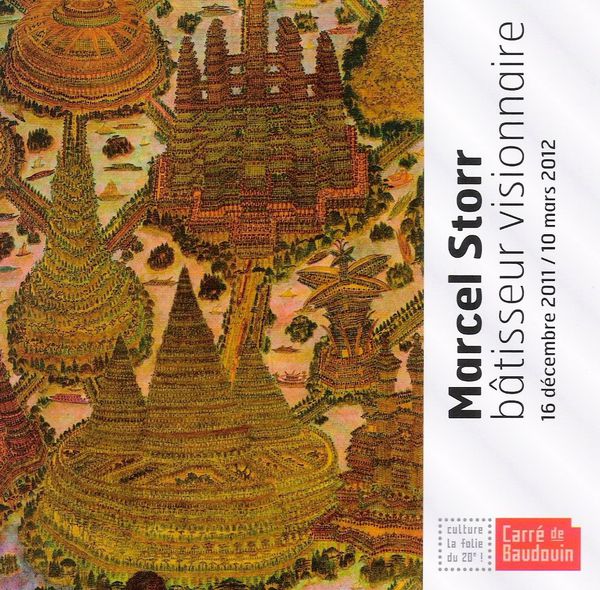
Bien que visitée dernier jour de l'année, l'exposition Marcel Storr sera ma grande découverte picturale de 2011. J'ai été alerté de l'existence de cette manifestation qui semble se dérouler en catimini malgré son ampleur, grâce à "la matinale" de France-Culture qui avait chroniqué cette exposition et à l'article de Philippe Dagen dans le Monde qui a rafraichi ma mémoire. Auparavant je n'avais jamais entendu parler de cet artiste singulier dont la totalité de l'oeuvre retrouvée, une soixantaine de dessins, est exposée au Carré Baudoin dans le XX ème arrondissement de Paris.
Marcel Storr n'a pas le profil habituel de l'artiste. Il est né à Paris en 1911, abandonné dès 1914 par sa mère, il est confié à des familles d'accueil paysannes successives qui le traitent si mal que l'enfant à force de coups deviendra sourd. De constitution fragile, il est plusieurs fois hospitalisé dans son enfance, ensuite il sera réformé. Ne sachant ni lire ni écrire, seulement signer, il survivra en allant de petits boulots en humbles tâches ne trouvant une certaine sécurité qu'à partir de , date à laquelle à la fois il se marie, avec une gardienne d'école, et est engagé par la mairie de Paris comme cantonnier chargé de nettoyer les allées du bois de Boulogne.
Mais cet être qui s'exprimait difficilement était habité par tout un monde qu'il retranscrira toute sa vie, de 1930 à 1975, sur le papier. On peut raisonnablement penser que nombreux ont été de ses dessins qui ont été perdus, peut-être que cette exposition et très modestement ce billet, espérons qu'il en aura beaucoup d'autres sur la toile, aideront à faire découvrir d'autres dessins de Marcel Storr. Cette oeuvre a été sauvée par un couple, les Kempf, qui par hasard l'a découverte qu'il soit remercier jusqu'à la fin des temps pour avoir donné au XX ème siècle un grand artiste.
Un soir de septembre 1971, la représentante des parents d'élèves vient rendre la clé de la salle où a eu lieu, une réunion à la concierge, celle-ci demande avec insistance à Liliane Kempf ne regarder les dessins de son mari, qui est absent. Liliane Kempf accepte avec réticence. Elle est vite ébloui par ce qu'elle découvre. A partir de cette date, avec son mari, elle n'aura de cesse d'essayer de promouvoir l'oeuvre de Marcelle Storr.
L'oeuvre se partage en quatre temps. Avant guerre Storr dessine des églises représentées frontalement d'une manière naive et qui est encore naturaliste. Son procédé est simple et minutieux. Il commence par un dessin extrêmement détaillé qui prolifère d'un coin de la feuille pour s'étendre sur toute la surface. Puis il colorie son dessin à l'aide de crayons de couleur, il passera à la fin de sa vie à l'encre de couleur, soigneusement toujours en commençant par un angle de la feuille, dans une gamme de tons presque toujours automnales. Nous connaissons sa methode grâce aux dessins inachevés.
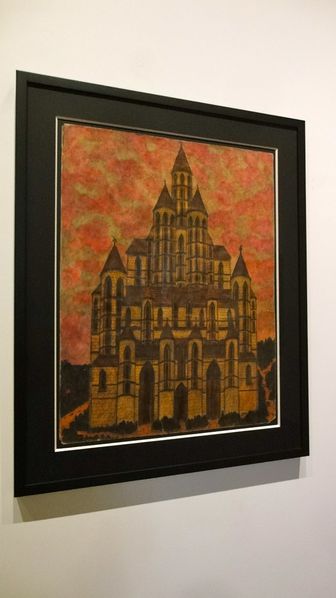
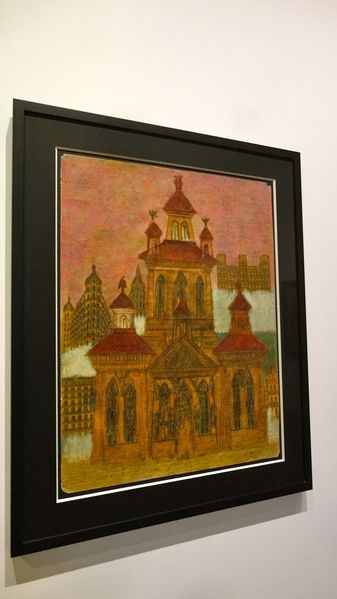
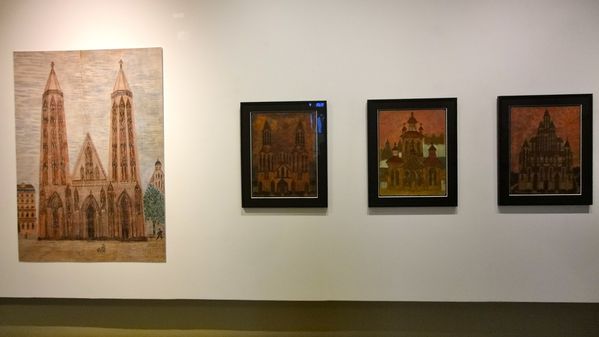
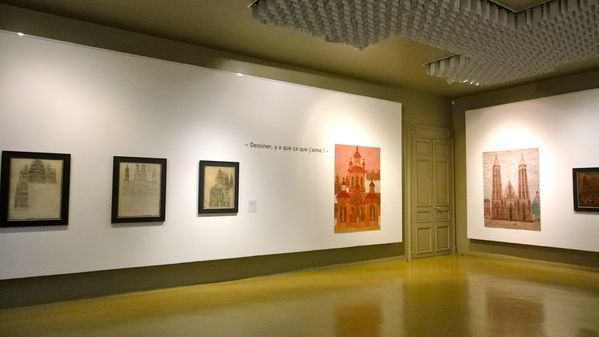


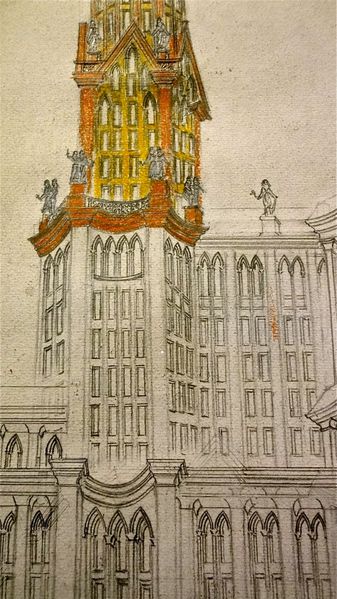

Ensuite viennent dans les années 50 de grandes tours que l'artiste peint sur plusieurs feuilles (en raison de la démesure du sujet) qu'il juxtapose. Alors que les premières architectures de Storr étaient désertées par l'homme, cette fois au pied de ses tours gigantesque on voit apparaitre un peuple de fourmis humaines et aussi de curieux vehicules pour transporter ce petit peuple. Ces engins m'ont évoqué ceux que Robida, en 1900, voyait circuler dans le Paris de l'an 2000.





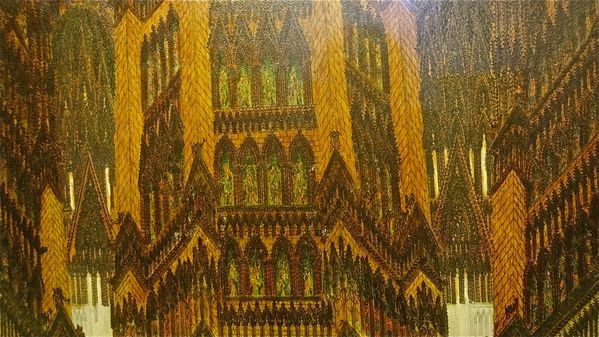
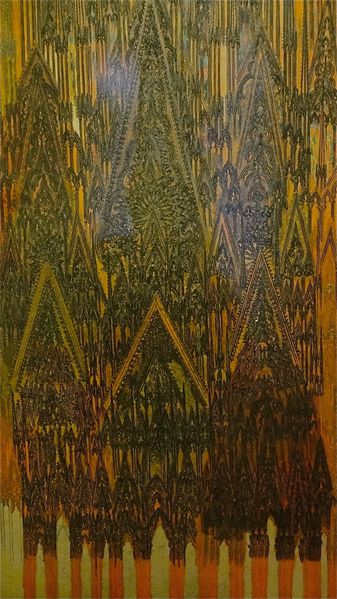



La troisième phase de l'oeuvre de Storr, que l'on nommera les cathédrales est entrepris en 1964 lorsque pour la première fois, il connait une stabilité matérielle et affective dans sa vie. On y voit l'apparition en masse du végétal qui parfois ne fait qu'un avec le minéral. La cathédrale devient palmier, le naturalisme fait place au délirant. Cette série de 25 cathédrales, faite sur environ une année. Toutes les cathédrales sont dessinées de profil dans le même carnet de papier Canson, comme autant de variantes sur un thème toujours identiques
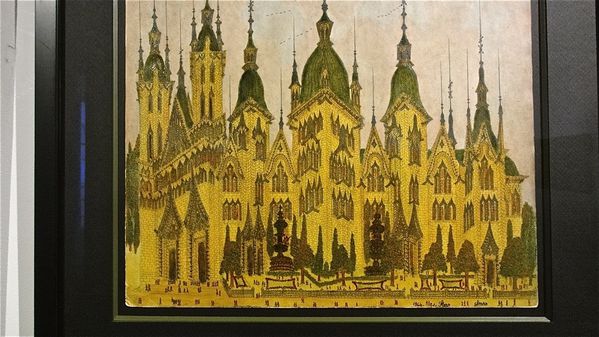

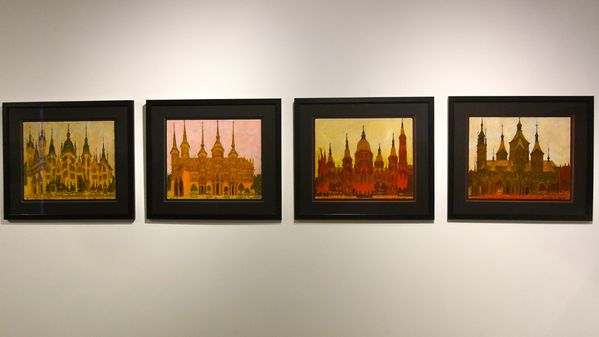
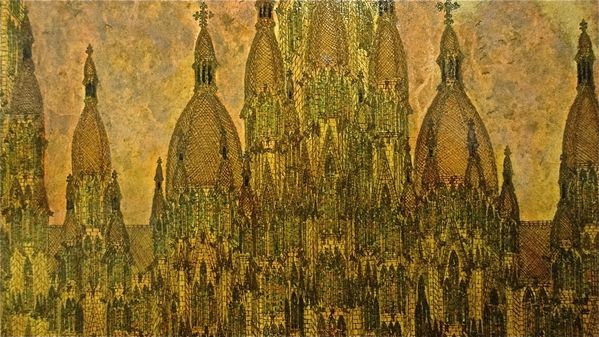


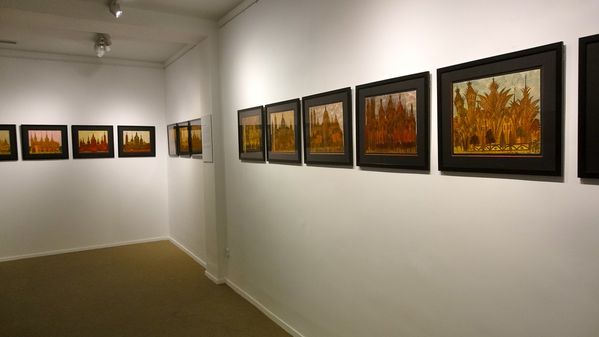

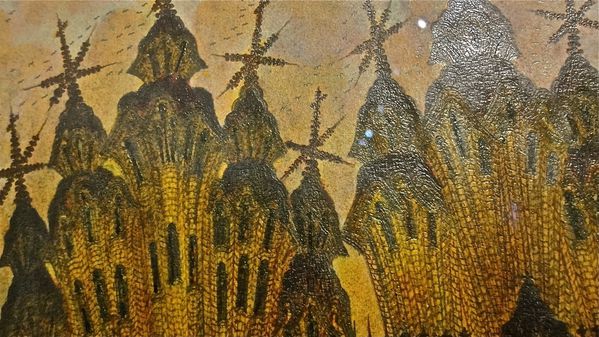



Cette présentation chronologique se termine par les dessins les plus spectaculaires ceux qui représentent des morceaux de villes tentaculaires et prodigieuses, l'exposition est sous-titrée justement, bâtisseur visionnaire. C'est avec la même méticulosité que trente ans avant Storr dessinait ses églises, qu'il fait naitre, à partir de 1965, sur le papier ses villes fabuleuses. Il est bien sur stupéfiant que ces villes soient nées de la main d'un homme illettré et qui n'a jamais voyagé mais Marcel Storr savait regarder, O combien. De son lieu de travail, il voyait s'élever les tours de la Défense. S'il ne savait pas lire, il est certain qu'il a feuilleté la presse illustrée. Il aurait eu en sa possession de vieux numéros de l'Illustration. La constante des mégalopoles de Storr est la présence des tours qui souvent sont plantées dans un paysage lacustre et fluvial. Pour mieux apprécier les détails des dessins, les commissaires de la manifestation proposent des agrandissements photographiques de morceaux de dessins.




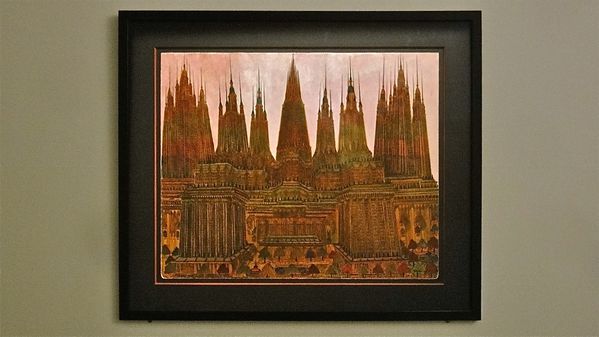



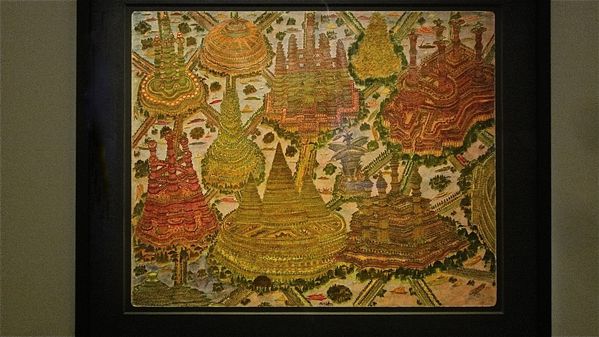


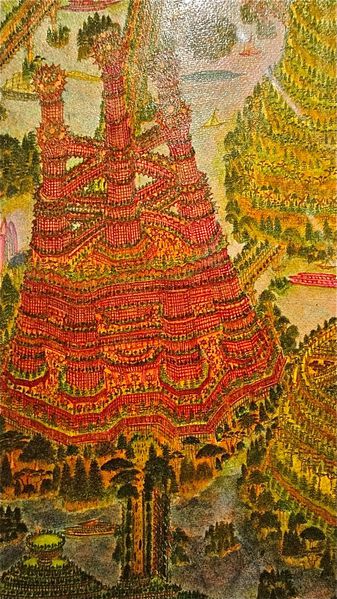

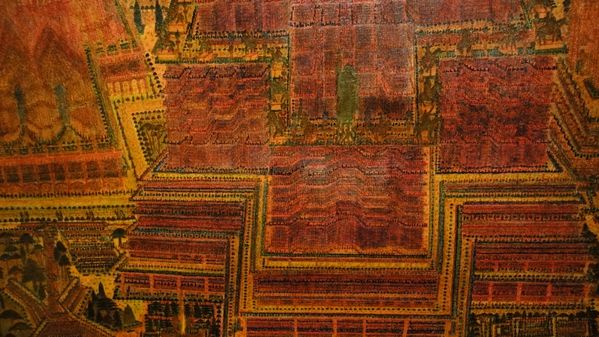

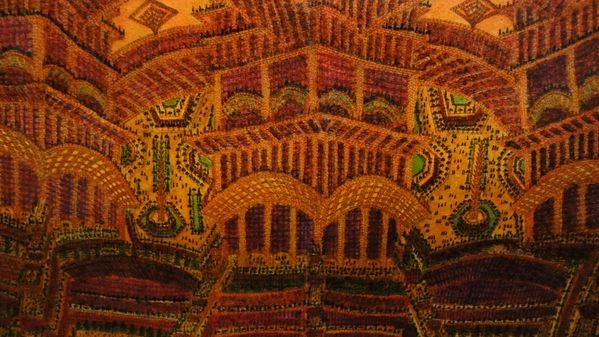
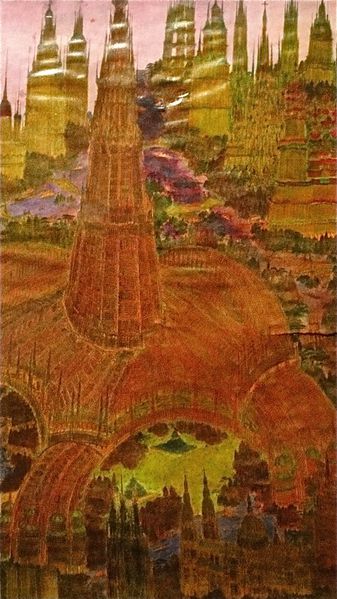


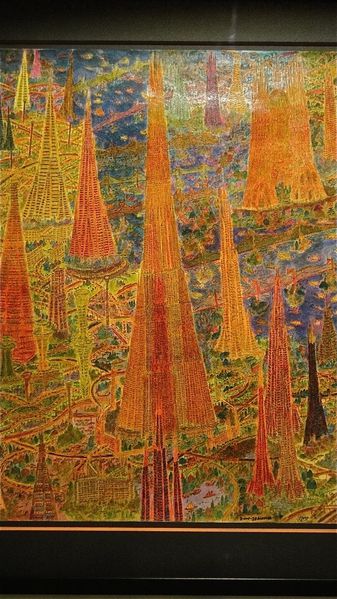
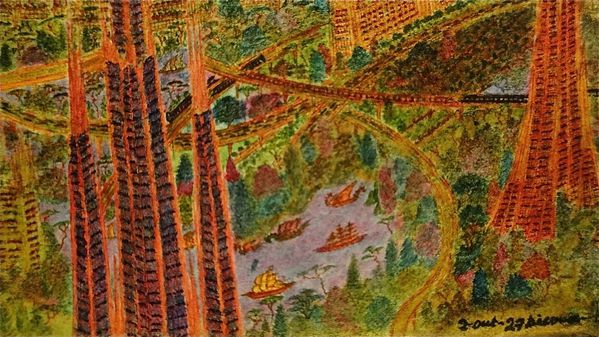



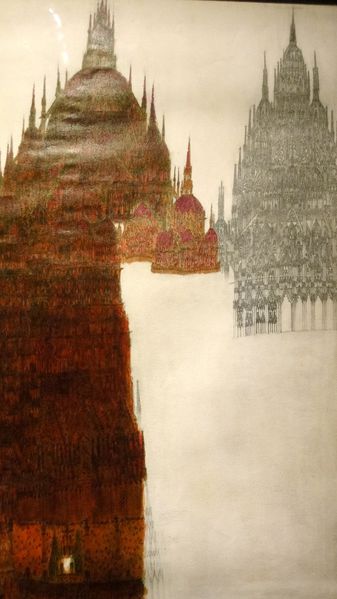







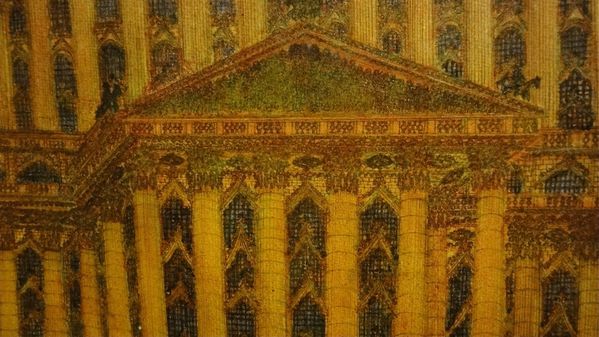



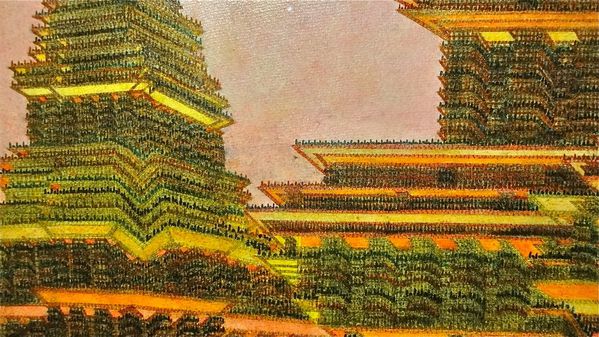

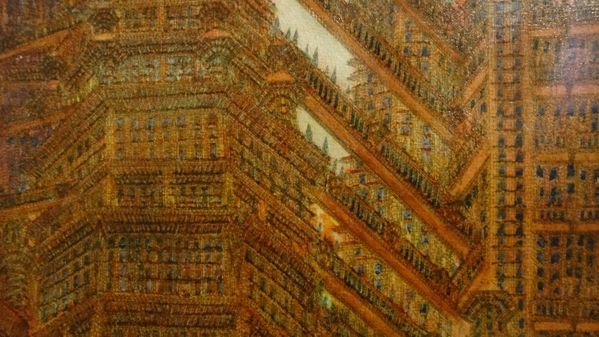
En 1971, Marcel Storr confie son oeuvre au couple Kempf pour la protéger, ce qui prouve que Storr avait conscience de son talent et de l'importance de son travail. En ce qui me concerne, si je n'avais rien connu de la vie de son auteur, j'aurais été tout autant été captivé par cette exposition.
Les éditions Phébus ont publiè un beau livre, à un prix abordable, 24 € qui fait office de catalogue et qui reproduit la totalité des dessins de Marcel Storr.
Il est peut être dommage que l'on mette autant en avant la biographie de l'artiste. Il est indifférent de savoir si l'oeuvre de Marcel Storr appartient à l'art naif ou à l'art brut. C'est un grand artiste, c'est tout. Il reste à espérer que cette oeuvre sera exposée dans son ensemble et non démantelée et si possible à Paris, ville qui en creux a largement inspiré ce travail. Regardons ces magnifiques dessins et n'ayons pas trop à l'esprit la vie de Marcel Storr, dont nous ne savons que peu de choses.





















Nema komentara:
Objavi komentar